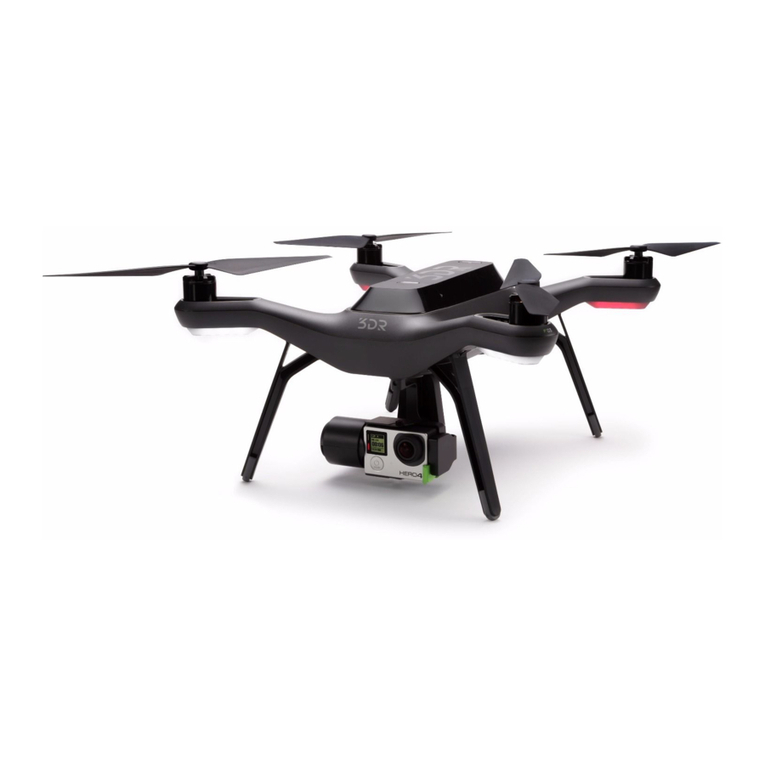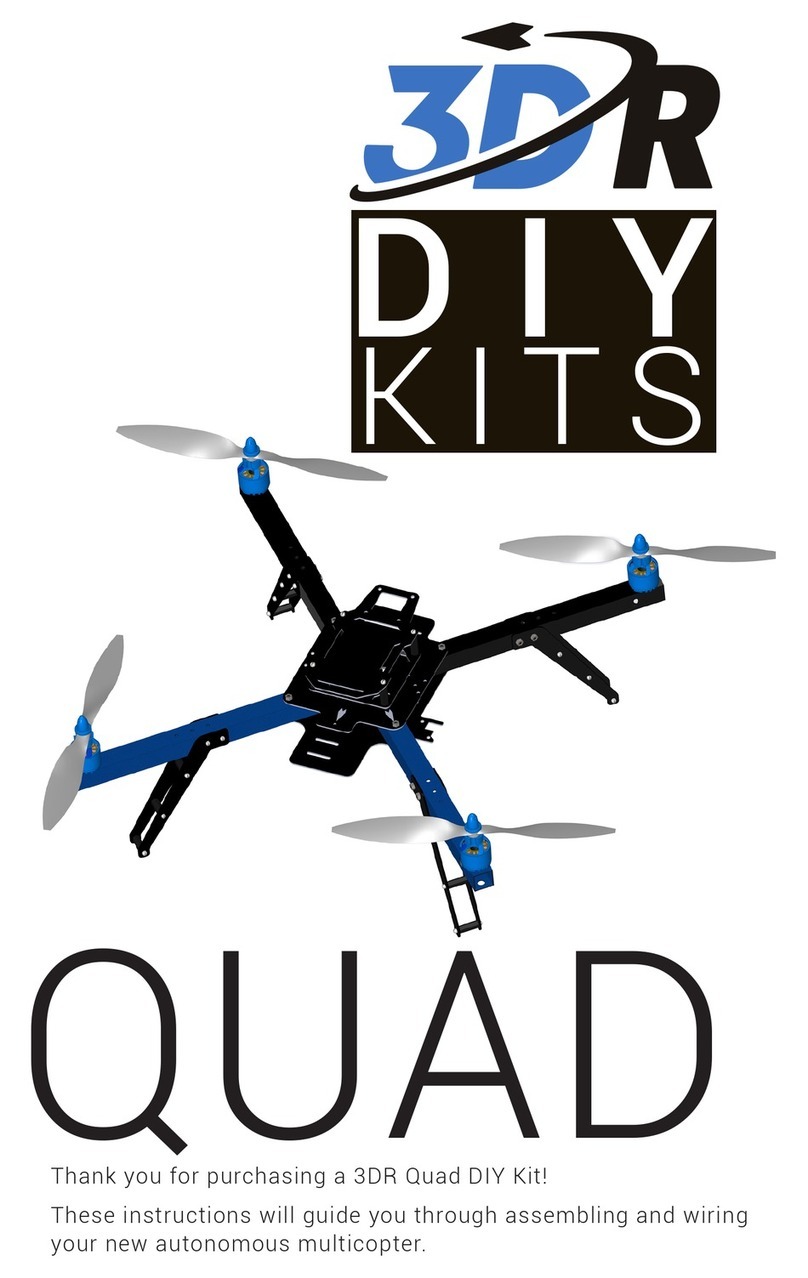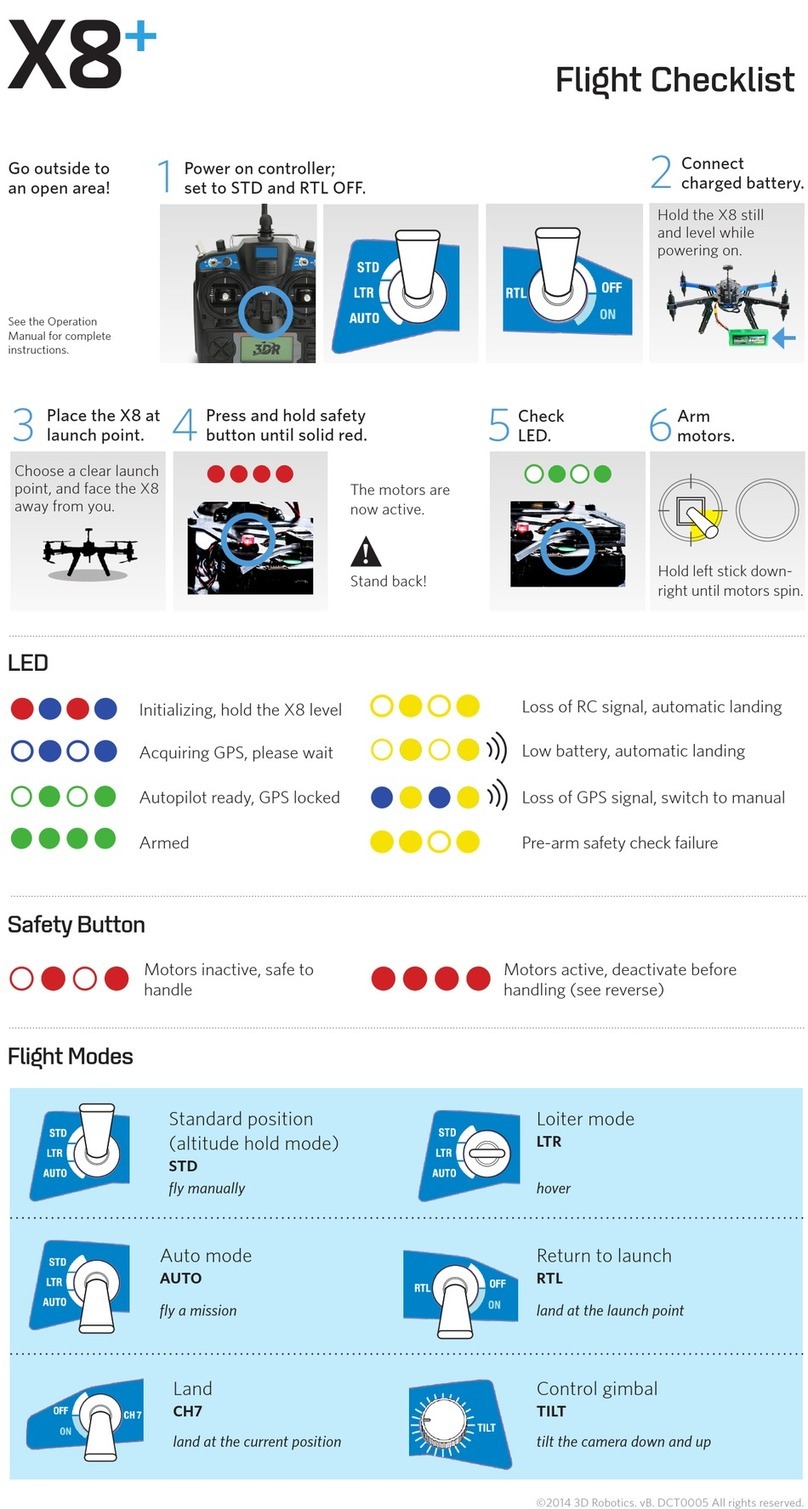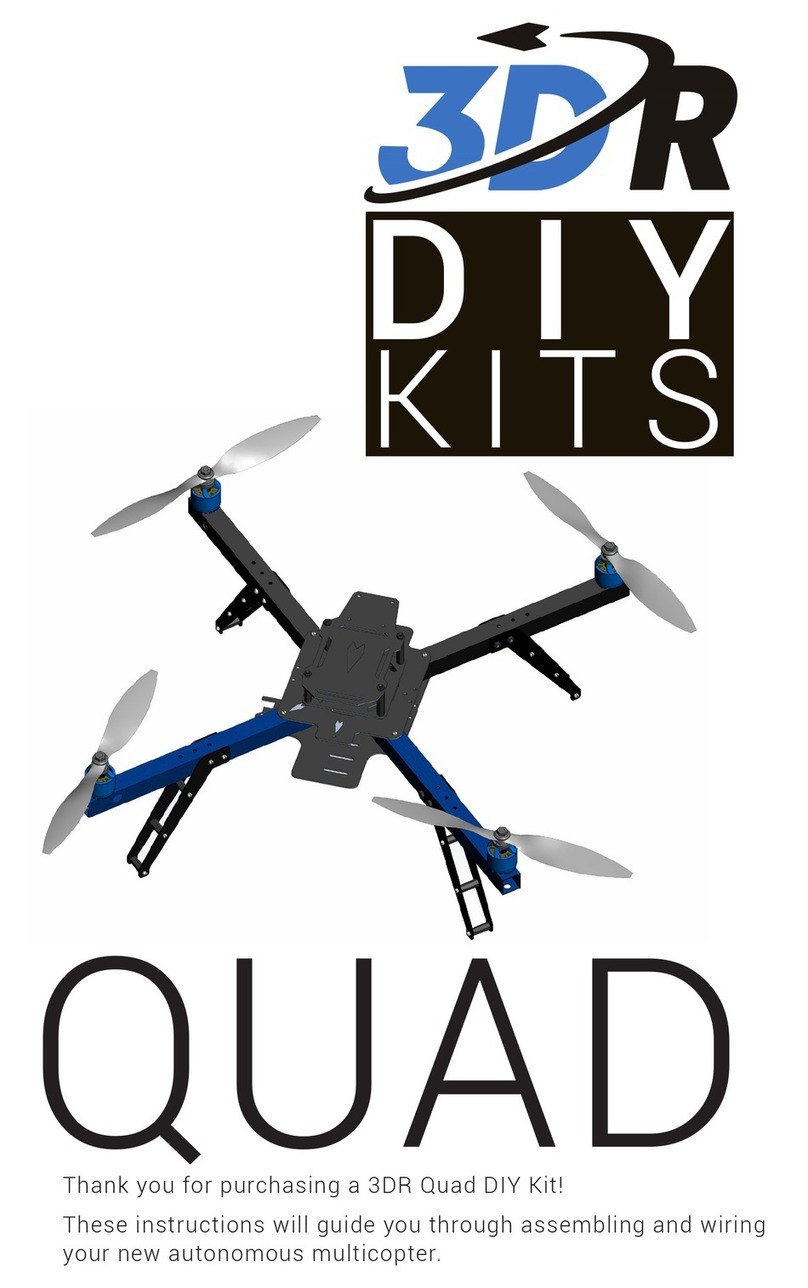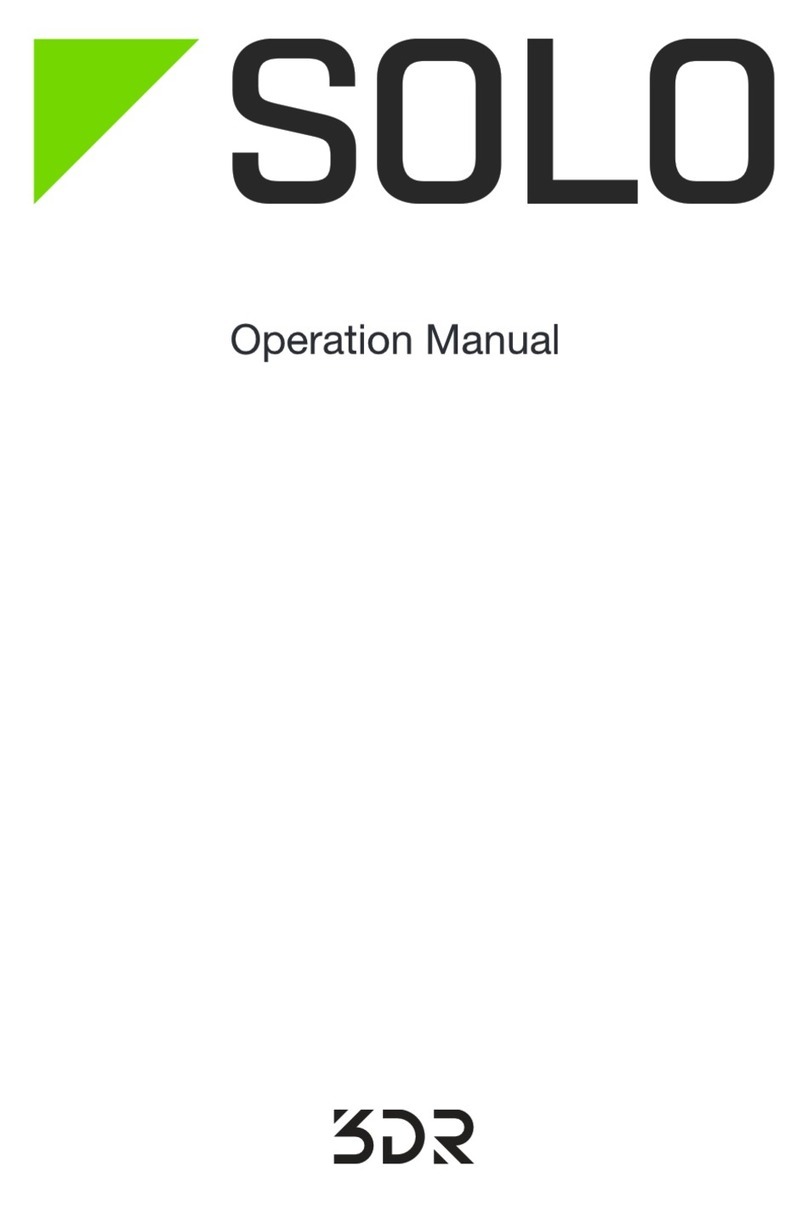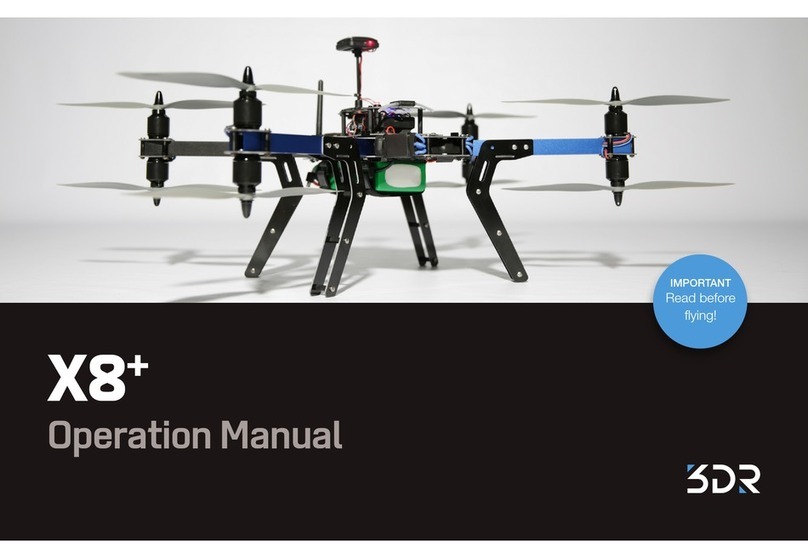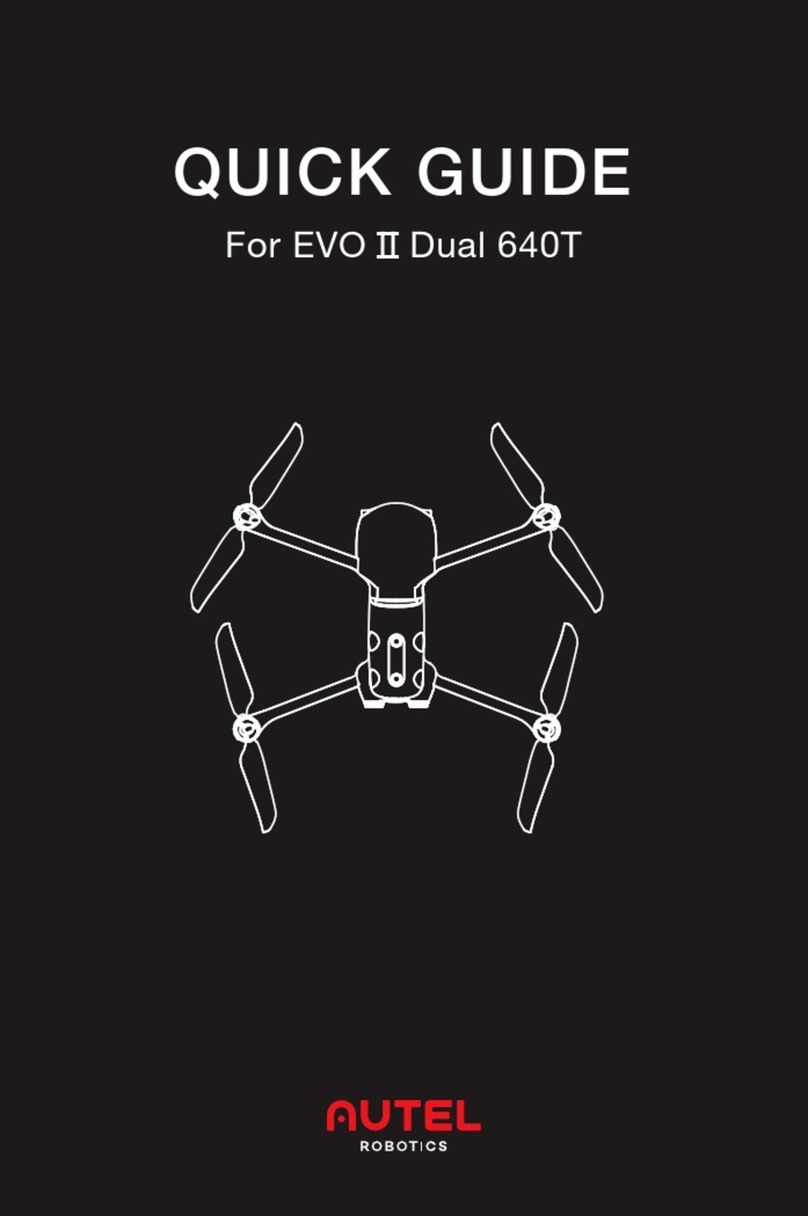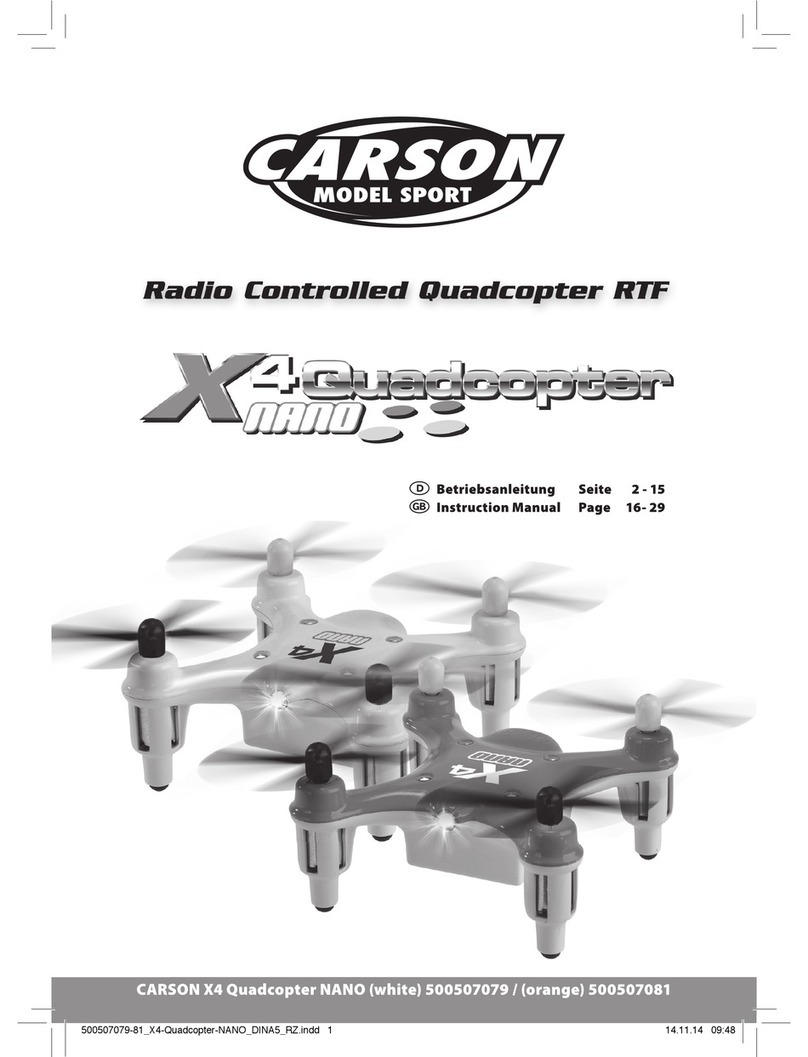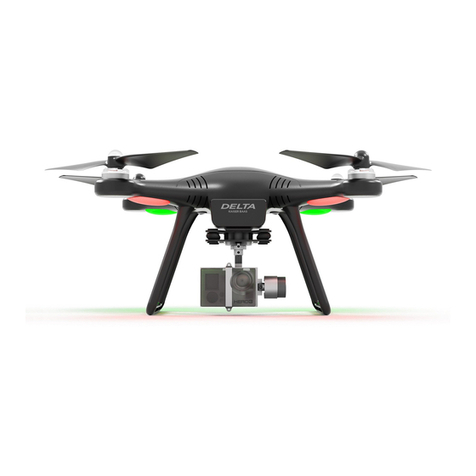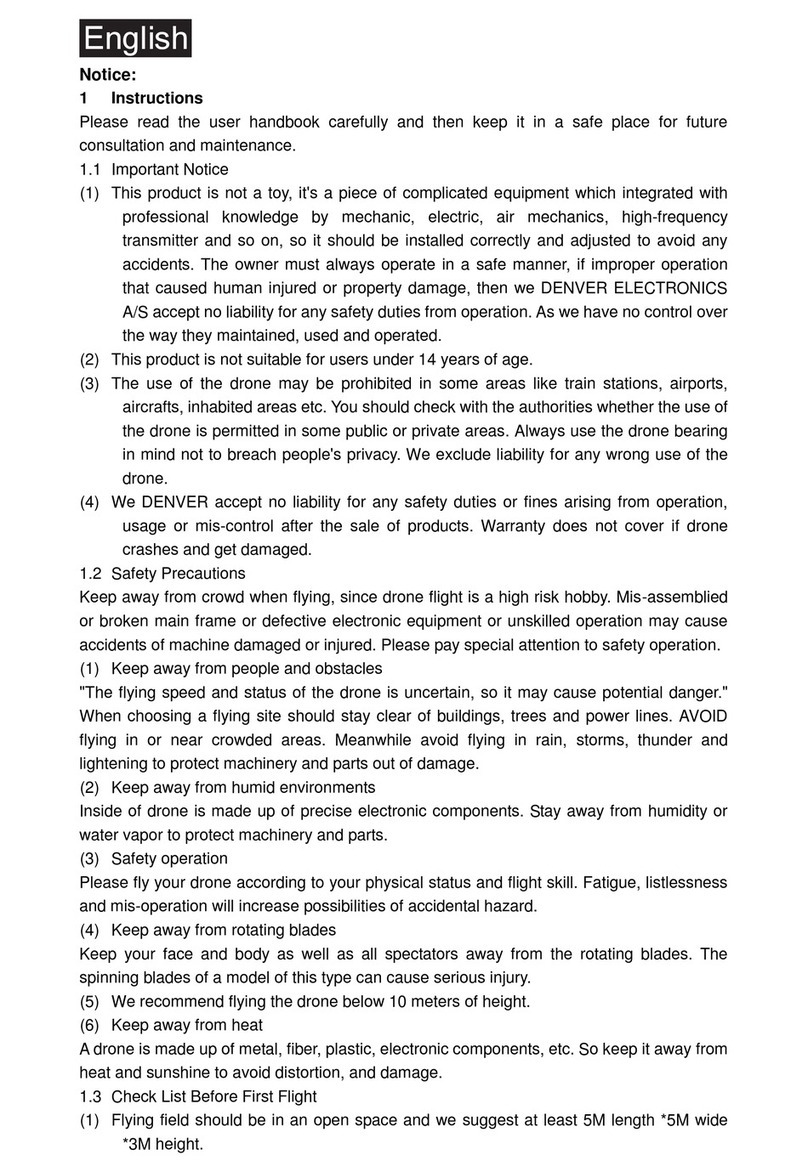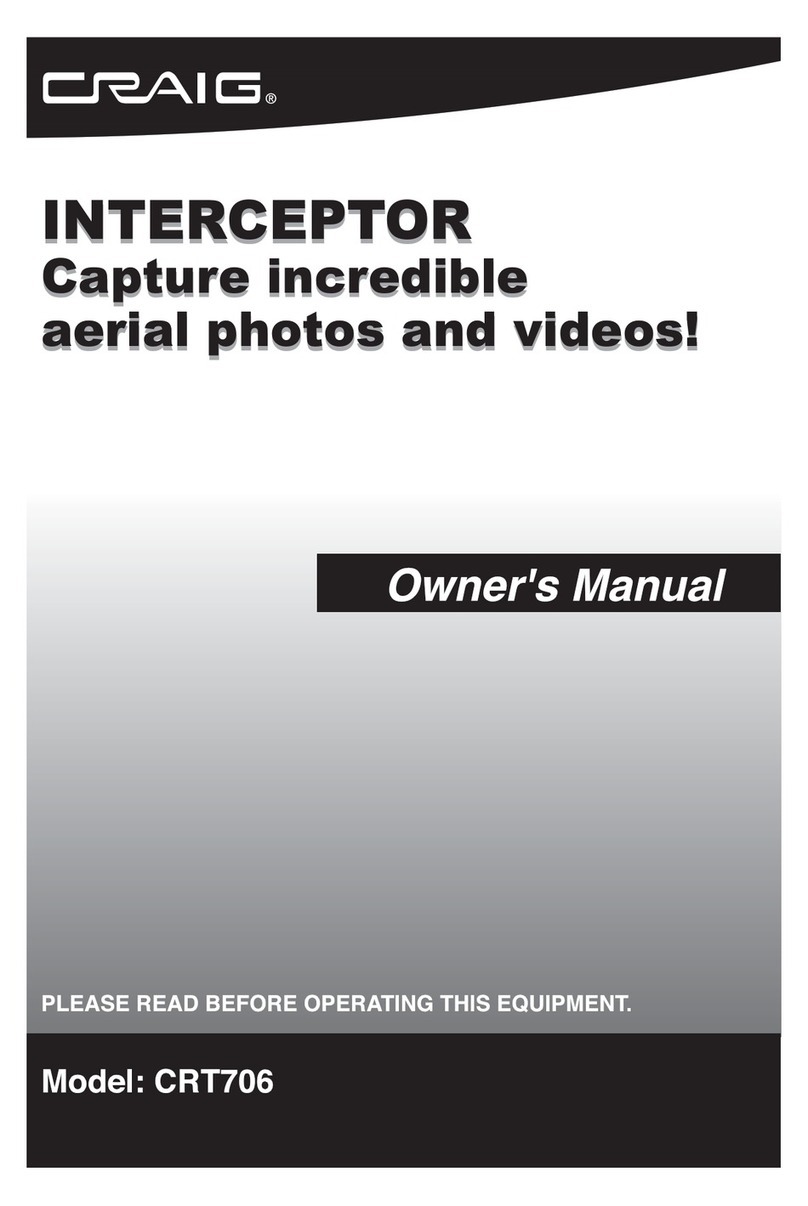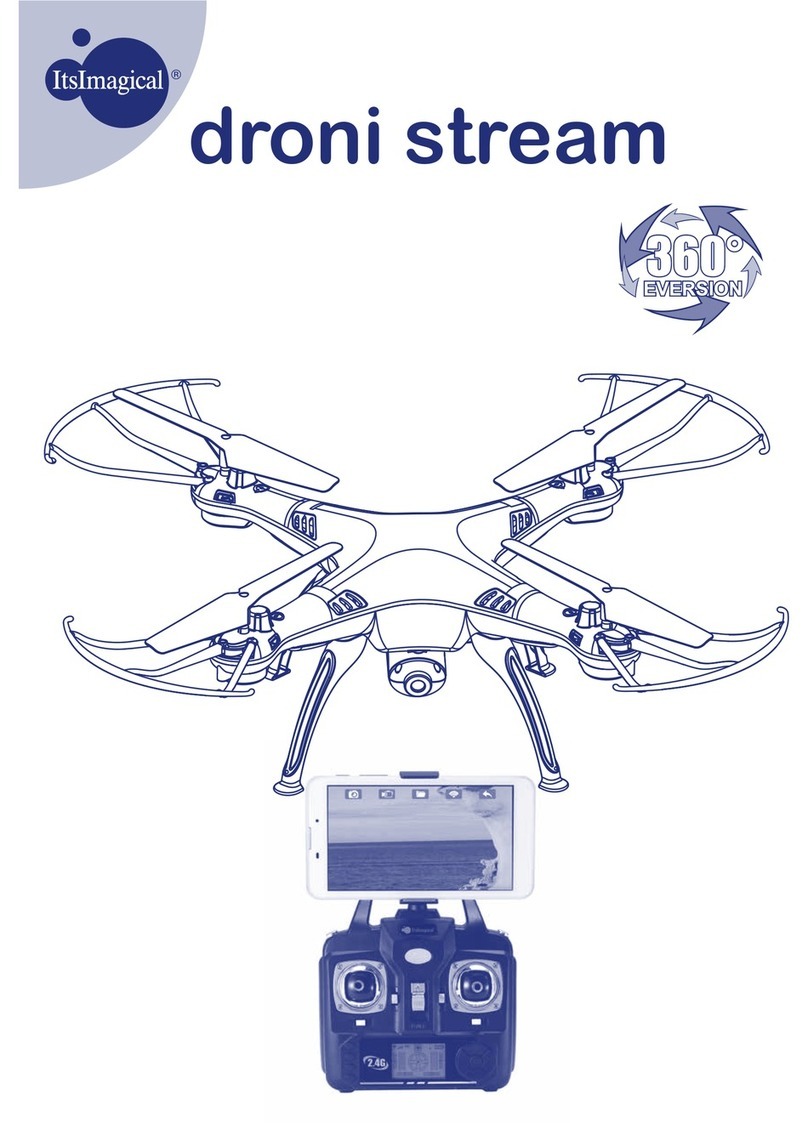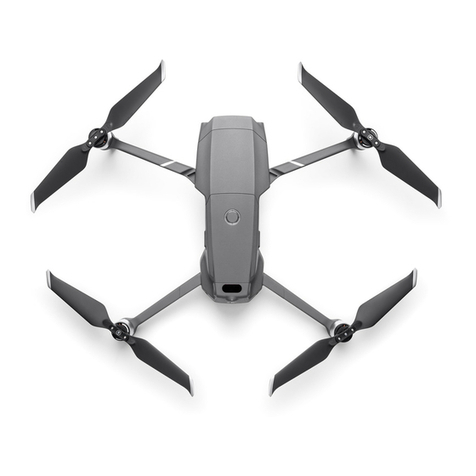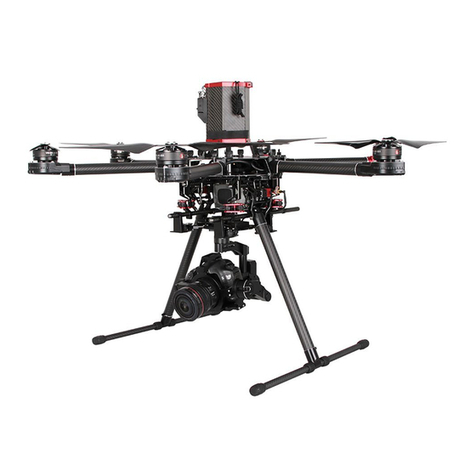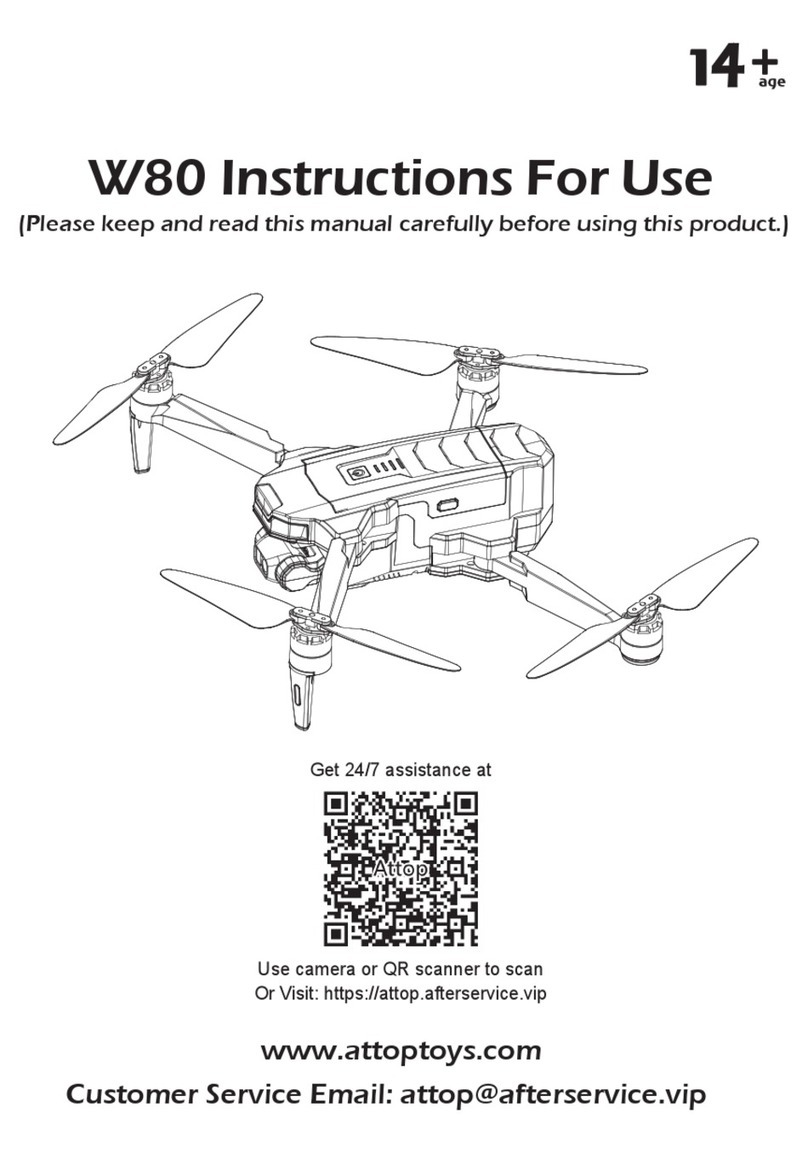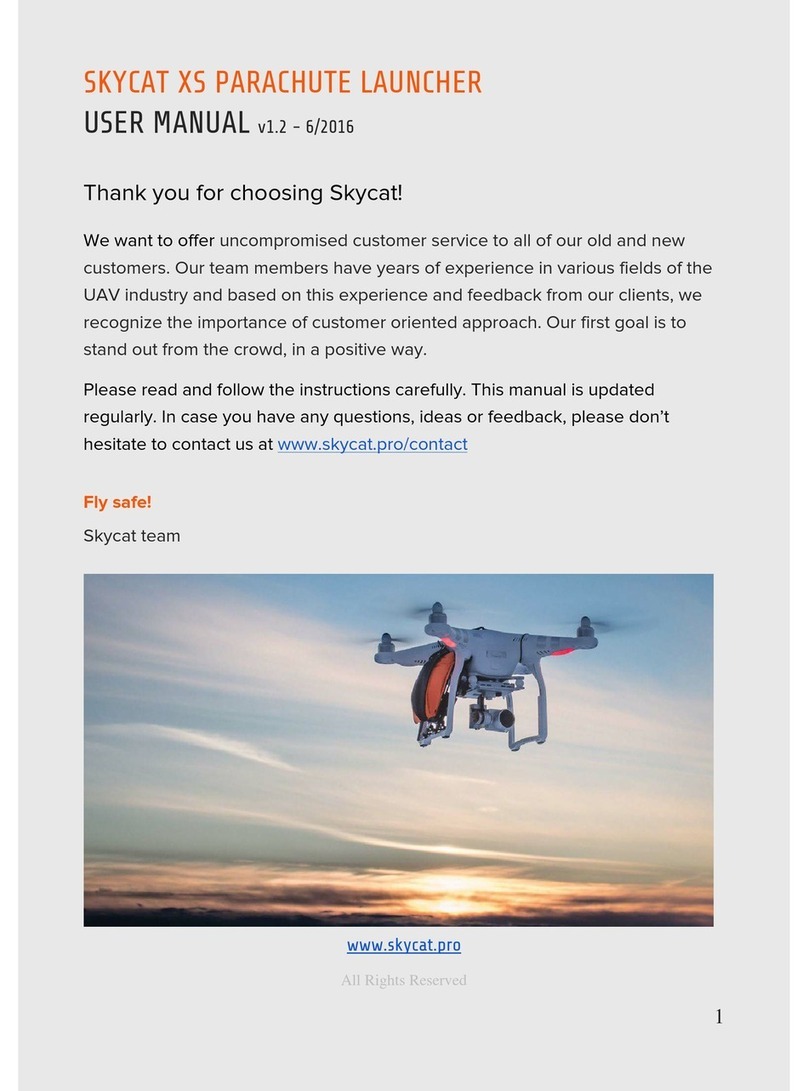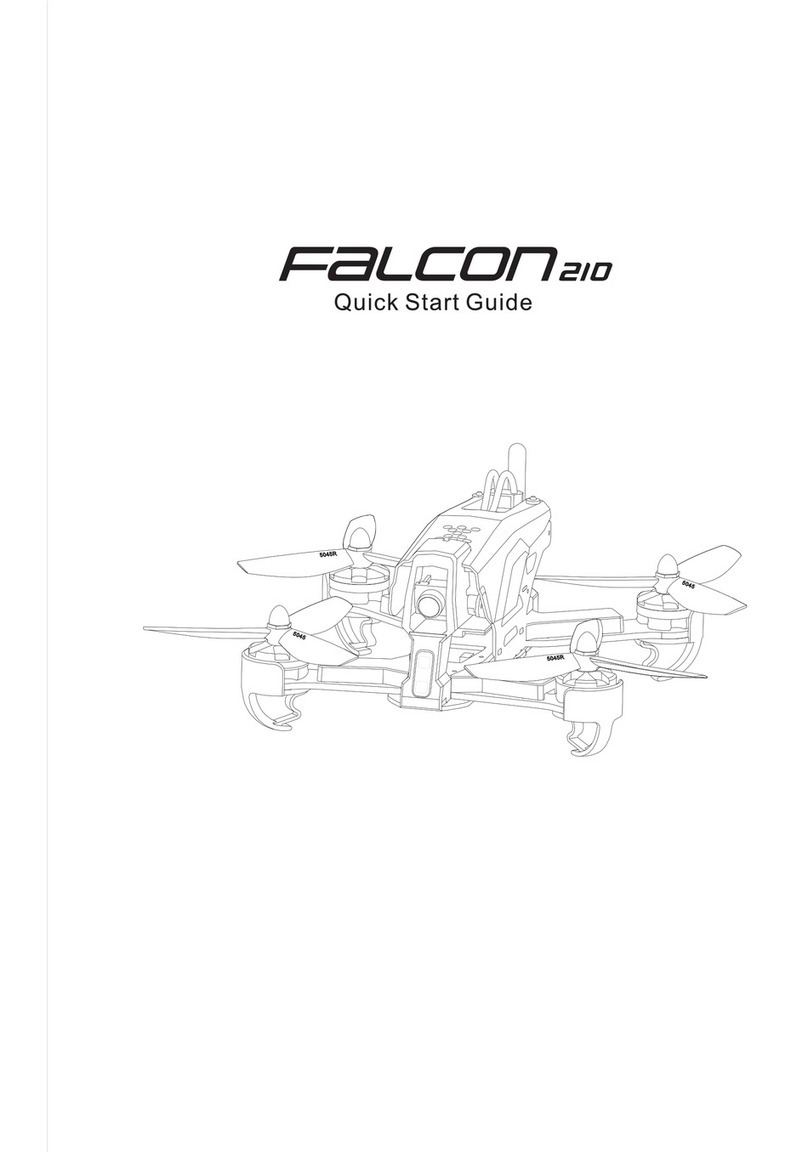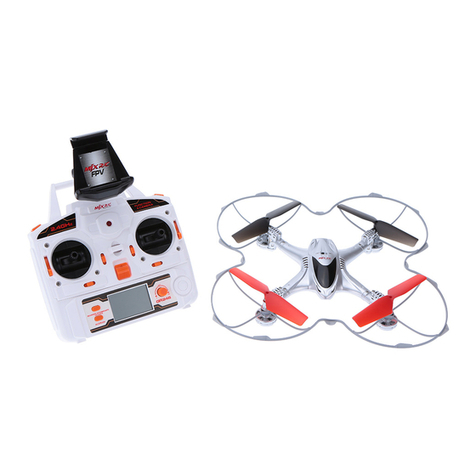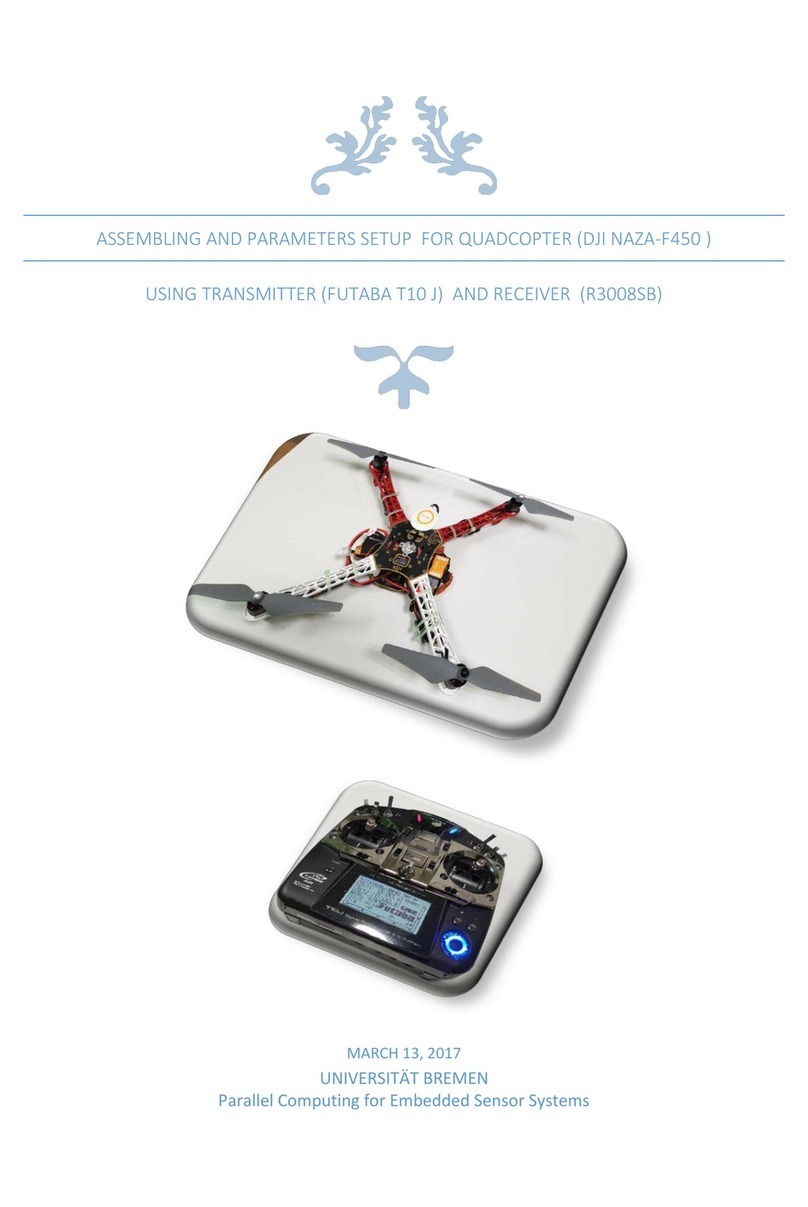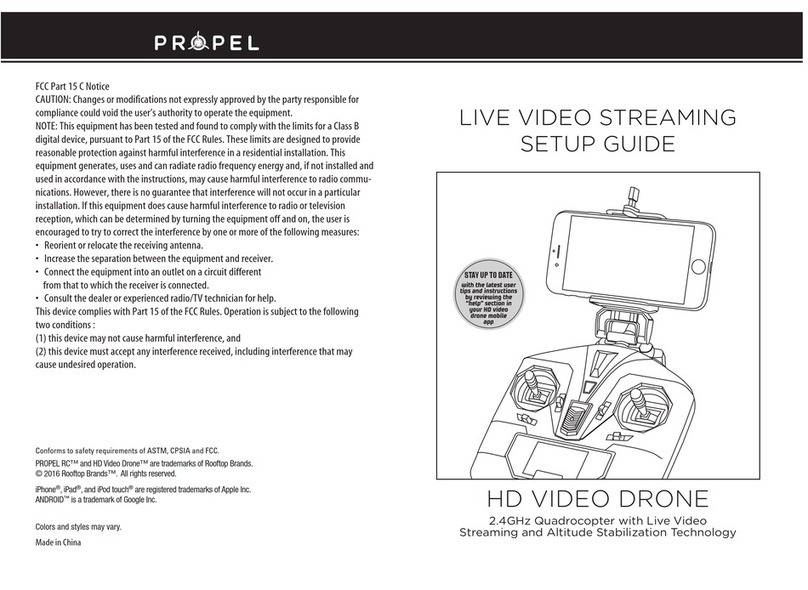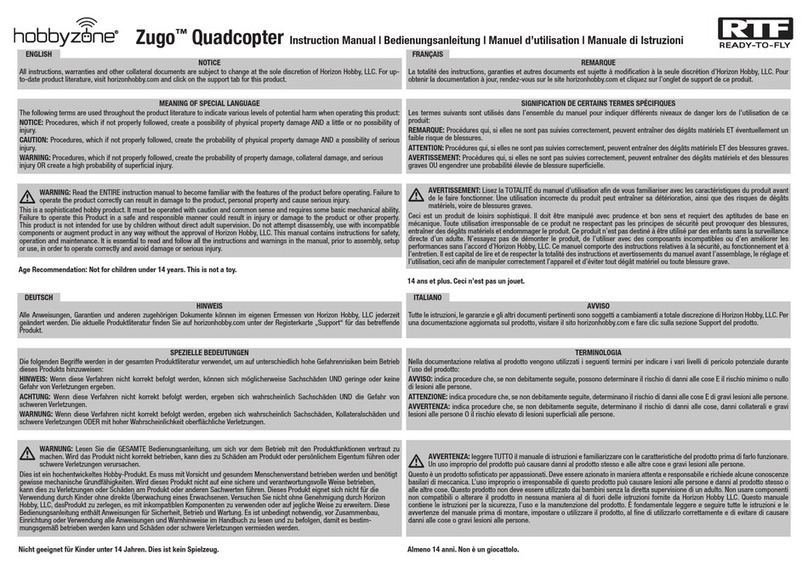3D R DIY Y6 Manual

1
DIY Y6
Build Manual
V.A
2014

2
Thanks for purchasing a DIY Y6!
These instructions will show you how to assemble a Y6 using the Pixhawk
autopilot system and ArduCopter/APM:Copter firmware. If you plan to use
other components in your build, please adjust these instructions accordingly.
For online instructions, visit 3dr.com/diy-y6-kit.
Frame parts 3
Electronics 4
Tools 4
1 Motor assembly 5
2 Power system wiring 8
3 Body plate assembly 10
4 Pixhawk assembly 15
5 Leg assembly 21
6 Calibration 22
7 Propeller assembly 22
Contents

3
Frame parts
30 mm bolts (5)
25 mm bolts (22)
5 mm bolts (30)
nylon bolts (4)
30 mm male-female standos (4)
19 mm hollow spacers (15)
18 mm female-female standos (9)
base plate
top plate
Pixhawk plate
accessory plate
metal nuts (32)
nylon nuts (3)
thumb nuts (2)
leg plates (6)
leg support plates (3)
motor plates (6)
velcro strips (one pair)
velcro straps (3)
dual lock
four-wire cables (25 cm and 15 cm)
15 cm female-female servo cable
male-female servo cables (30 cm and 10 cm)
six-wire cables (30 cm and 15 cm)
zip ties
blue arms (2)
black arms (1)
power distribution board
threadlocker

4
Electronics motors with adapters (6)
electronic speed controllers (6)
Deans connectors (6)
SF propellers (4)
SFP propellers (4)
Heat shrink tubing (12)
GPS mast with four mounting screws
u-blox GPS with compass
Pixhawk kit
To complete this build, you will need the following tools not included with your kit:
• Phillips screwdriver
• Double-side foam tape or other mounting adhesive
• Soldering equipment
Note: The electronics for this build require soldering. If you’re unfamiliar with soldering,
our friends at Sparkfun have some great tutorials that can get you started, including this
comic. For an example of exactly what soldering you’ll be doing in this build, view this
video tutorial.
Tools
This build uses the Pixhawk autopilot
system, including these components:
• Pixhawk autopilot
• u-blox GPS with Compass
• Telemetry radios
• Radio control system
• ArduCopter/APM:Copter firmware
Click here for more information
about these components and to view
compatible radio control systems.

5
1Motor
assembly
19 mm hollow spacers (3)5 mm bolts (4)motors (2) motor plates (2) metal nuts (3)
25 mm bolts (3)
Follow these instructions to assemble
two co-axial motors.
1 Assemble bottom motor
Align two holes in the bottom of the
motor with two holes in the motor
plate. Apply threadlocker to two 5
mm bolts, and secure the motor to
the plate from below. This motor will
attach to the underside of the arm,
so orient the motor so that the cables
will protrude as close as possible to
the hole in the side of the arm.
When applying threadlocker, use less
than one drop, and cover only four or
five threads where the bolt connects
with the motor. Make sure to insert
the bolts into the holes in the bottom
of the motor and not into the slots
where they could interfere with the
motor.

6
2 Attach top motor to arm
Place a motor plate on top of the arm
with the short end of the plate facing
towards the end of the arm. Place the
motor on top of the plate, and align
the two small holes in the motor,
plate, and arm. Orient the motor with
the cables as close as possible to the
hole in the side of the arm.
Apply threadlocker to two 5 mm
bolts (less than one drop covering
four or five threads at the end of the
bolt), and secure the motor and
plate to the arm from below by
accessing through the two large holes
in the bottom of the arm. Make sure
to insert the bolts into the holes in
the bottom of the motor and not into
the slots where they could interfere
with the motor.
3 Thread motor cables through arm
Now you’ll thread the cables from
both motors through the arm. First,
thread the cables from the top motor
through the hole in the side of the
arm, and use a piece of tape to label
the cables so that you can distinguish
between the top and bottom
motor cables. Once you’ve labelled
the top motor cables, thread the
bottom motor cables through the
hole in the arm.

7
4 Attach bottom motor to arm
Place the assembled bottom motor
against the bottom of the arm with
the short end of the plate facing
towards the end of the arm. Apply
threadlocker to the ends of the two
25 mm bolts (less than one drop
covering four or five threads at the
end of the bolt). Place a 19 mm
hollow spacer between each of the
pairs of holes in the two motor plates.
Place the 25 mm bolts through the
motor plates and spacers, and secure
from below with a metal nut.

8
2Power system
wiring
Follow these instructions to connect
the power system.
1 Solder Deans to ESCs
Solder a Deans connector to the red
and black wires on each electronic
speed controller (ESC). Check the
Deans connectors for the + and –
markings, and solder the + side to
the red wire and the – side to the
black wire. Don’t forget to add heat
shrink tubing to the wires before
soldering, and shrink the tubing over
the finished connections.
2 Number ESCs
Use tape (or other method) to label
each ESC with a number one through
six.
Deans to ESC:
negative = black
positive = red
-+
power modulepower distribution
board (PDB)
electronic speed
controllers (ESCs)
(6)
Deans connectors (6)

9
3 Connect ESCs to PDB
Connect the Deans connectors
(red) on the ESCs to the Deans
connectors on the power distribution
board (PDB) in any order.
Take a look at the PDB and find the
pins labelled M1 through M6
(motors 1 through 6), and make a
note of which color wire connects to
each. Now connect the three-wire
cables from each ESC to these pins
on the PDB according to the ESC
numbers. This is where the order is
critical. Connect the ESC that you
labelled as “1” to the pins on the PDB
labelled “M1”. Orient the cable with
the white wire at the top (farthest
from the base of the board) and the
black wire at the bottom (closest to
the base of the board).
4 Connect PDB to power module
Attach the XT60 connector (yellow)
on the PDB to the XT60 connector on
the power module.

10
3Body plate
assembly
Follow these instructions to assemble
the body plates.
1 Add velcro straps to base plate
Thread the two velcro straps through
the slots in the base plate. These
straps will hold the battery to the
bottom of your copter. The perfectly
flat side of the plate (without the
protruding nuts) should face down.
Your kit includes two velcro strips to
attach to the battery and the bottom
of the copter. To install, attach the
strip with loops (fuzzy) to the bottom
of the plate between the straps, and
attach the strip with hooks (smooth)
to your battery.
2 Attach arms to base plate
Using the innermost hole in the arm
and the hole in the base plate marked
below, insert a 30 mm screw from
the bottom up through the plate and
the arm. Attach the blue arms to the
wider end of the plate and the black
arm to the narrow end as shown on
the next page.
Visit the APM:Copter Wiki and learn
more about which batteries to use
with your copter.
19 mm hollow
spacers (6)
30 mm bolts (5)base plate top plate metal nuts (10)25 mm bolts (7) nylon nuts (3) thumb nuts (2) velcro straps velcro strip
Table of contents
Other 3D R Quadcopter manuals

